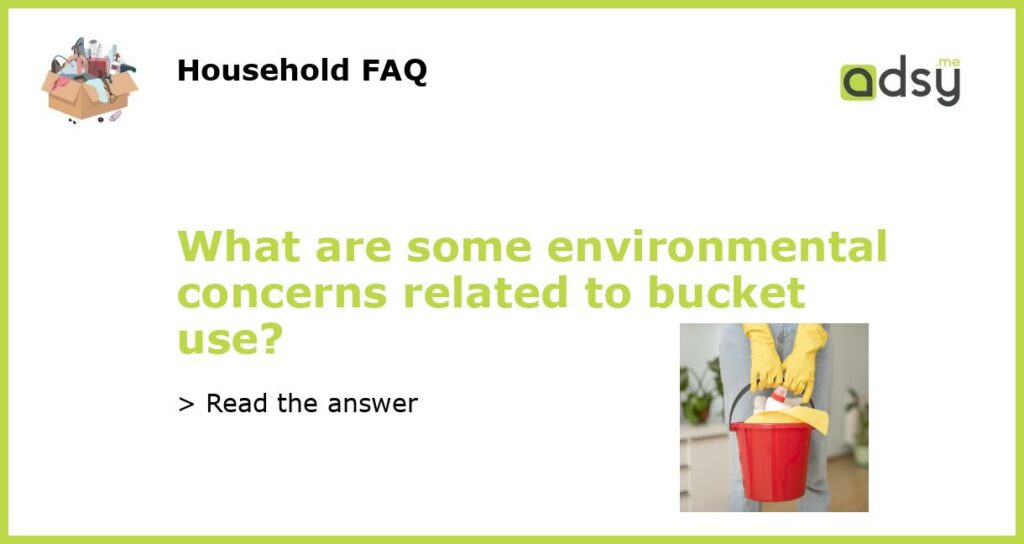The Environmental Concerns of Using Buckets
Buckets are simple tools that have been used for centuries for various purposes. They have become an essential item in households, construction sites, and farming communities. However, the use of buckets has raised environmental concerns due to their manufacturing, disposal, and potential risks to the environment. In this article, we will discuss some of the environmental concerns related to bucket use and how to mitigate them.
The Carbon Footprint of Bucket Manufacturing
Bucket manufacturing involves the extraction of natural resources such as iron, aluminum, and plastic. These resources consume large amounts of energy and emit carbon in the process. Moreover, bucket production requires a considerable amount of water, which could cause freshwater depletion in drought-prone areas. To mitigate the carbon footprint of bucket manufacturing, it is essential to prioritize the use of energy-efficient technologies, utilize recycled materials, and adopt sustainable manufacturing practices.
The Disposal of Buckets in Landfills
When buckets reach the end of their useful life, they often end up in landfills. The disposal of buckets in landfills poses environmental problems. Buckets are typically made of plastic or metal and do not decompose easily. These non-biodegradable materials contribute to the accumulation of waste in landfills, taking up valuable space and releasing harmful chemicals into the environment. To reduce the environmental impact of bucket disposal, it is crucial to encourage recycling, repurposing, and the use of biodegradable alternatives.
The Impact of Bucket Use on Water Resources
Bucket use has the potential to affect water resources adversely. For instance, the use of buckets to transport water can cause water spillage, leading to an increased risk of erosion and flooding. Moreover, buckets used in construction sites can accumulate debris and chemicals that may leach into water resources. To minimize the impact of bucket use on water resources, it is important to adopt responsible water management practices, such as conserving water, using water-efficient tools, and properly disposing of hazardous materials.
The Risk of Bucket Contamination
Buckets that are not cleaned regularly have the potential to become contaminated with harmful bacteria and chemicals. For example, buckets used to transport food items or chemicals may accumulate residues that may cause contamination. These contaminants not only pose health risks to humans but also to the environment. To minimize the risk of bucket contamination, it is essential to maintain proper hygiene practices, regularly clean buckets, and store them in a safe and secure location.






